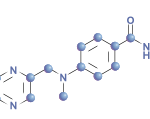Results
In the study, a total of 101 patients were randomized; approximately 50% had previously used biologic disease-modifying anti-rheumatic drugs (bDMARDs), and approximately 30% of patients had previously used JAK inhibitors. According to the researchers, patient demographics and baseline disease characteristics were similar across treatment groups.
At week 12, 48.0% of patients in the 10 mg TLL-018 treatment group achieved an ACR50 response (95%; confidence interval [CI]: 28.42–67.58), 65.4% of patients in the 20 mg TLL-018 treatment group achieved an ACR50 response (95%; CI: 47.10–83.67) and 72.0% patients in the 30 mg TLL-018 treatment group achieved an ACR50 response (95%; CI: 54.40–89.60). In the group that received 5 mg of tofacitinib twice daily, 41.7% of patients achieved an ACR50 response (95%; CI: 21.94–61.39). The response rates of both the 20 mg TLL-018 BID treatment group and 30 mg TLL-018 treatment group were statistically superior to the tofacitinib treatment group (P<0.05).
The proportions of patients achieving clinical remission (i.e., a DAS28-CRP score of <2.6) at week 12 were 39.1% for the 10 mg TLL-018 treatment group, 34.8% for the 20 mg TLL-018 treatment group and 54.5% for the 30 mg TLL-018 treatment group compared with only 17.4% of patients in the tofacitinib treatment group.
bDMARDs: Both the 20 mg and 30 mg doses of TLL-018 demonstrated higher efficacy than tofacitinib in patients who had prior bDMARD use. These patients achieved ACR50 rates of greater than 66%.
Patients on tofacitinib who did not achieve an ACR50 response at week 12 and were switched to 20 mg of TLL-018 twice daily experienced subsequent improved responses (not reported). Specific secondary end point results were not reported.
In patients who received either treatment, the most frequently reported treatment-emergent adverse events were hyperlipidemia and respiratory infection. One case of malignancy was reported in a patient who received tofacitinib. No deaths, venous thromboembolism or major adverse cardiovascular events were observed during the study.
Conclusion
At 20 mg and 30 mg twice-daily doses, TLL-018 demonstrated superior efficacy over 5 mg of tofacitinib twice daily for treating patients with RA. These results suggest that inhibiting TYK-2 in addition to JAK-1 may benefit this patient population.
TLL-018 was well tolerated with no unexpected safety concerns. TLL-018 may prove beneficial in further studies in patients with RA who are difficult to treat. Phase 3 studies are planned in China, but not yet in the U.S. for this indication.3


